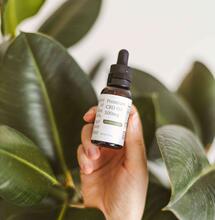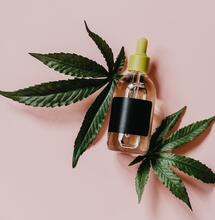How To Make CBD Oil

Soft Secrets takes a look at popular CBD oil extraction methods and explains how to conduct a simple alcohol extraction.
These days, CBD (cannabidiol) has become the dominant therapy in many dispensaries and pot shops around the world. Contrary to the recent surge in media coverage, cannabidiol has been around for just as long as THC; in fact, the primogenitor marijuana plants that originated in Central Asia were indica-dominant strains. Unlike the floaty, uplifting effect imparted by THC-rich sativas, the CBD in indica-dominant plants gives users a relaxed, body-based feeling that is medically relevant for myriad ailments.
Why Use CBD Oil?
Cannabidiol oil manufacturing is intended to remove any negative aspects of smoking, vaporizing or eating Cannabis flowers. Cannabinoids are only found within the trichomes or resin glands, located almost exclusively on the female flowers of weed plants. Trichomes, referred to colloquially as THC crystals, act as defence mechanisms and plant protectors, trapping winged predators and aiding in wind and contact pollination. The trichomes contain a cannabinoid-rich oil, the content of which differs not only per strain, but also per plant and even per trichome on the same plant. Additionally, the active ingredients or cannabinoids can be concentrated and purified via Cannabis oil production, decreasing dosage and increasing potency. This not only saves money but also lessens the amount required to achieve the desired effect. The lack of smoke or bud material means that CBD oil can be used with discretion in public, allowing for regular, timed doses. This also enables severely ill children to receive helpful medication. Finally, one distinct advantage of CBD oil over THC oil – besides the fact that a completely opposite effect is experienced from consumption of each product – is that hemp plants are very high in CBD and are legal throughout much of the world. Hemp plants are employed in the production of tens of thousands of industrial products and their high CBD content means that hemp waste from the production of such goods can be recycled to make CBD oil.
How Is CBD Oil Produced?
Since the main point of using CBD oil is to remove any non-active components of the plant, the most effective approach to producing CBD-rich oil is to use high-CBD plant matter as a raw ingredient. Once the perfect strain has been selected, a manufacturing method should be chosen. The Cannabis industry is rife with varying extraction methods; each has its advantages and disadvantages. Those seeking the purest, cleaned CBD oil possible will likely employ a different method than commercial producers. The cost, relative safety and potency of the product is directly controlled via method of extraction.
Methods of CBD Oil Extraction
* Carrier Oil Extraction: The procedure of manufacturing CBD oil products via oil-based extraction is rapidly gaining in popularity. The safest method in terms of not making anything (or anyone) explode, oil extractions also provide a dose of healthy Omega acids if hemp seed oil is employed as the carrier; olive oil is also a commonly-used carrier oil. Since the oil-filled trichomes are fat- or solvent-soluble, natural plant oils are an effective way to extract the cannabinoid-laden resin. An added benefit is the lack of potentially harmful chemical residue that is deposited in the CBD oil by other extraction methods. One major downside of oil-based CBD extractions is that most carrier oils have a limited shelf life. This means that smaller batches should be produced for personal use and proper storage should be a concern. Also, this product is best eaten or applied topically, rather than being smoked. * Super- or Sub-Critical CO2 Extraction: Generally considered the safest method of extraction, this is also the cleanest. More scientific and careful than other methods, super- or sub-critical extraction employs extremely high or low temperatures to provide a protective environment in which the cannabinoids are preserved and isolated. Due to the highly-controlled aspects of this process, the integrity of the cannabinoids (and thus, the purity of the oil) is maintained. In addition, the green chlorophyll is removed from the end product, leading to an extremely clean-tasting product. This particular approach may not present the best alternative for many small-scale producers, especially those who are making CBD oil in order to save money. Expensive, technically-complicated equipment is required, the operation of which usually takes a while to perfect. Although the quality produced is potentially the highest, in addition to potency, this method usually requires a large financial investment, as well as the investment of much time and trial-and-error experimentation, until a perfected process is achieved. Additionally, the major drawback of the super-critical method is that heat can damage the delicate terpenes – the elements responsible for the flavour and scent of each strain, as well as therapeutic benefits – during the decarboxylation process. * Solvent Extraction: The solvent method is the approach most commonly taken by small-scale CBD and THC oil producers, primarily due to its relatively low cost, easily-obtainable required equipment and simple process; unfortunately, this is also the most dangerous technique. The solvents most typically employed are butane, grain alcohol, isopropyl alcohol, hexane or ethanol. There are several reasons to avoid this method. Firstly, the use of solvents always brings about the potential for explosions. Secondly, it is difficult – if not impossible – to completely remove any and all traces of the solvent from the end product, reducing the safety of the substance and essentially removing the justification of using CBD oil over simply smoking pot. This can negate any positive aspect of choosing to medicate with Cannabis oil, potentially worsening existing medical conditions or leading to new ones. A third reason for avoiding solvents is that this method can actually destroy some of the therapeutic plant waxes, decreasing the overall medicinal value and recreational quality of the oil. Solvent-based extraction processes do not produce as clean of a product as CO2 extraction, for example. Since some chlorophyll is also extracted via solvent use, the end product may not impart the same taste that results from CO2 extraction.
Easy Grain Alcohol Cannabis Oil Extraction Method
This process yields about two to four grams of extremely potent, medicinal-grade CBD oil that is suitable for ingestion. After a few practice runs, the entire process for small-batch edible oil production should take about an hour, including around thirty minutes of cooking time. Grain alcohol is the solvent that is least likely to leave impurities or residue in the final product. Supplies Needed: - One ounce of dried, ground-up bud material or two to three ounces of ground, dried trim/shake - One gallon of solvent (Grain alcohol or other high-proof alcohol; never use rubbing alcohol) - Medium-sized mixing bowl (Glass is best, or ceramic) - Strainer (A cheesecloth/stainless steel kitchen sieve combo, or muslin bags, grain-steeping bags or even clean stockings/nylons) - Catchment container - Double boiler - Kitchen utensils (Large wooden spoon, silicon spatula, plastic syringe for dosage and dispensing of oil, funnel) Procedure: - Get organized – Prepare your space, arrange your necessary equipment, find a level work area and make sure that it is clean and set up before starting - Place the ground-up Cannabis material into the mixing bowl, making sure to leave some space for the solvent. Find a larger bowl before proceeding further, if necessary. - Completely cover the plant material with the alcohol, adding about an extra inch of solvent above the top level of plant matter. - Using the wooden spoon, agitate the Cannabis material within the solvent for about three minutes. This enables the resin glands to dissolve into the solvent. Make sure that the plant matter is thoroughly saturated and has had a chance to expel its resin content. - Place straining bag or sieve into the catchment container. Pour the dark green liquid from the mixing bowl into the bag or sieve; allow the liquid to be filtered completely and pour into the container. Gently massage the bag in order to squeeze out as much liquid as possible. Note: At this point, many people repeat the previous four steps in order to extract as much resin as possible into the solvent. This second wash should remove most of the remaining resin. - Pour the strained liquid into the double boiler. Fill the bottom of the double boiler with an appropriate amount of water. If your alcohol-resin solution does not all fit in the top of the double boiler, you can keep refilling the pot as you boil down the CBD oil, eventually processing all of the rinse liquid. - Place the double boiler on high heat until the liquid begins to bubble, which is actually the alcohol evaporating. When it reaches the bubbling stage, turn off the burner – the residual heat contained in the water bath will continue heating the mixture, allowing the alcohol to evaporate. - If the mixture stops bubbling, it may be necessary to turn the heat back on, once or twice more. The evaporation step usually takes between fifteen and twenty-five minutes to complete. Note: The mixture should continue bubbling throughout the evaporation process. As the alcohol level decreases, so will the amount of bubbles. It helps to occasionally mix the solution with the silicon spatula, scraping the sides of the pan as you mix. Do not let the mixture get too hot, as this will damage the cannabinoids and compromise potency and flavour When the mixture is still runny but has stopped bubbling, turn the heat back on ‘low’, encouraging the mixture to begin bubbling again, then turn off the heat. Continue stirring, which will allow even more alcohol to evaporate away. - The oil is done when it has reached a thick, tar-like consistency and no longer bubbles. Since it continues to thicken as it cools, it is important to transfer the oil into storage or dosage containers at this point. - Slowly draw the CBD oil into the plastic syringes. As you reach the bottom of the pan, this will become more difficult, which is normal. Transfer any remaining amounts into small, air-tight containers. Aside from squeezing out small doses from the syringe, a toothpick can also be used to portion off dosages. Note: If a topical application is preferred, simply combine the CBD oil with olive or coconut oil while it is still warm. This also decreases the potency, stretching out the dosages for cash-strapped or less experienced users.



